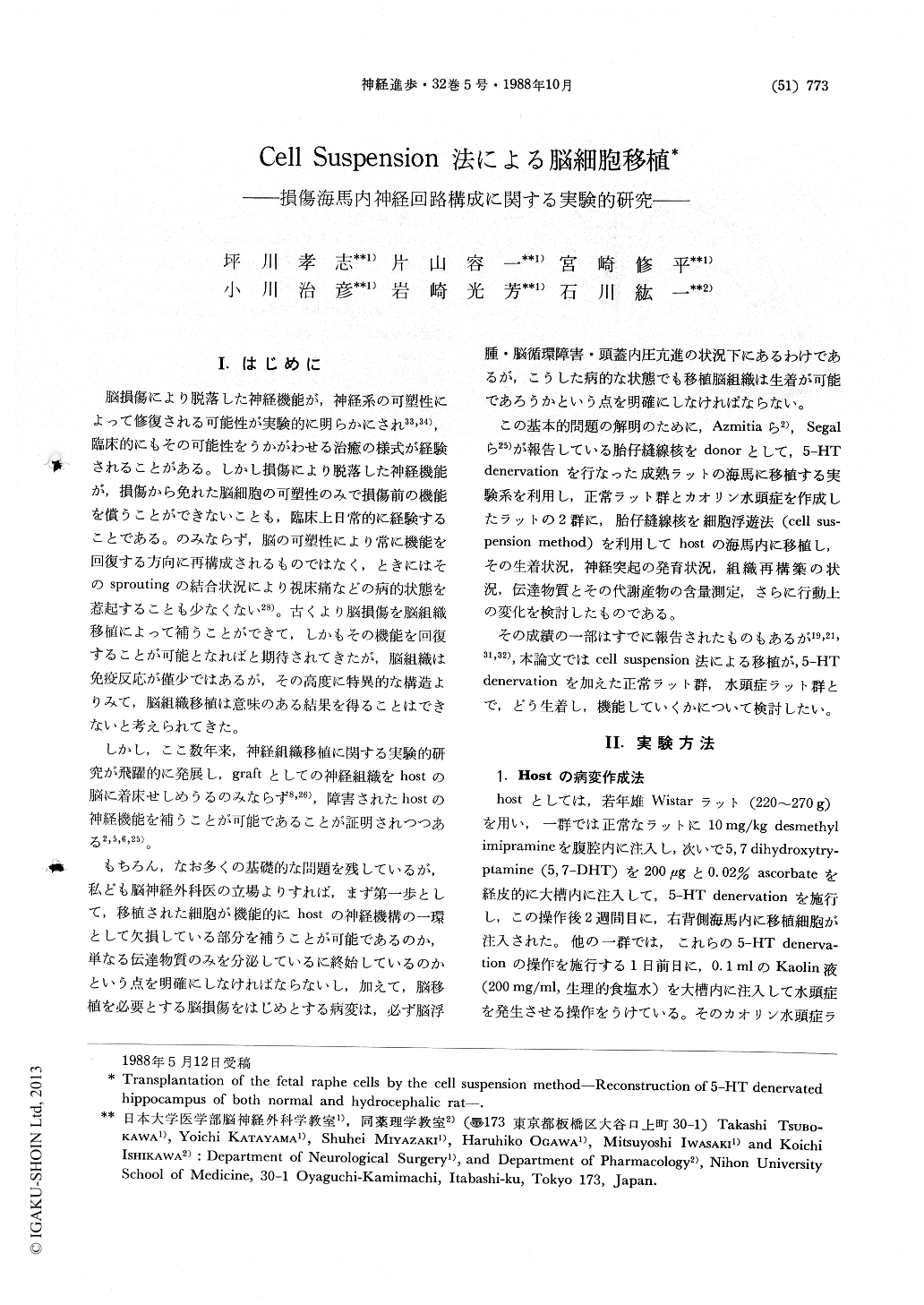Japanese
English
- 有料閲覧
- Abstract 文献概要
- 1ページ目 Look Inside
I.はじめに
脳損傷により脱落した神経機能が,神経系の可塑性によって修復される可能性が実験的に明らかにされ33,34),臨床的にもその可能性をうかがわせる治癒の様式が経験されることがある。しかし損傷により脱落した神経機能が,損傷から免れた脳細胞の可塑性のみで損傷前の機能を償うことができないことも,臨床上日常的に経験することである。のみならず,脳の可塑性により常に機能を回復する方向に再構成されるものではなく,ときにはそのsproutingの結合状況により視床痛などの病的状態を惹起することも少なくない28)。古くより脳損傷を脳組織移植によって補うことができて,しかもその機能を回復することが可能となればと期待されてきたが,脳組織は免疫反応が僅少ではあるが,その高度に特異的な構造よりみて,脳組織移植は意味のある結果を得ることはできないと考えられてきた。
しかし,ここ数年来,神経組織移植に関する実験的研究が飛躍的に発展し,graftとしての神経組織をhostの脳に着床せしめうるのみならず8,26),障害されたhostの神経機能を補うことが可能であることが証明されつつある2,5,6,25)。
Transplantation of fetal raphe cells (12-14 days of gestation) into the adult rat hippocampus by using cell suspension method, as a potential method for treatment of the damaged brain in which fun-damental element are host brain damage of both host normal wistar rat and kaolin hydrocephalic rat was produced by injection of 5,7 DHT (200 ng) into the cisterna magna in order to destroy 5-HT cells selectively. At 2 weeks following 5-HT denervation, fetal raphe cell suspension implanted into the right dorsal hippocampus.
After 5-10 week after the transplantation, trans-planted 5-HT cells were stained immunohistoche-mically, 5-HT, 5-HIAA and other monoamine related substances were quantitated by means of HPLC-ECD and behavioral study on both normal and hydrocephalic groups.

Copyright © 1988, Igaku-Shoin Ltd. All rights reserved.


